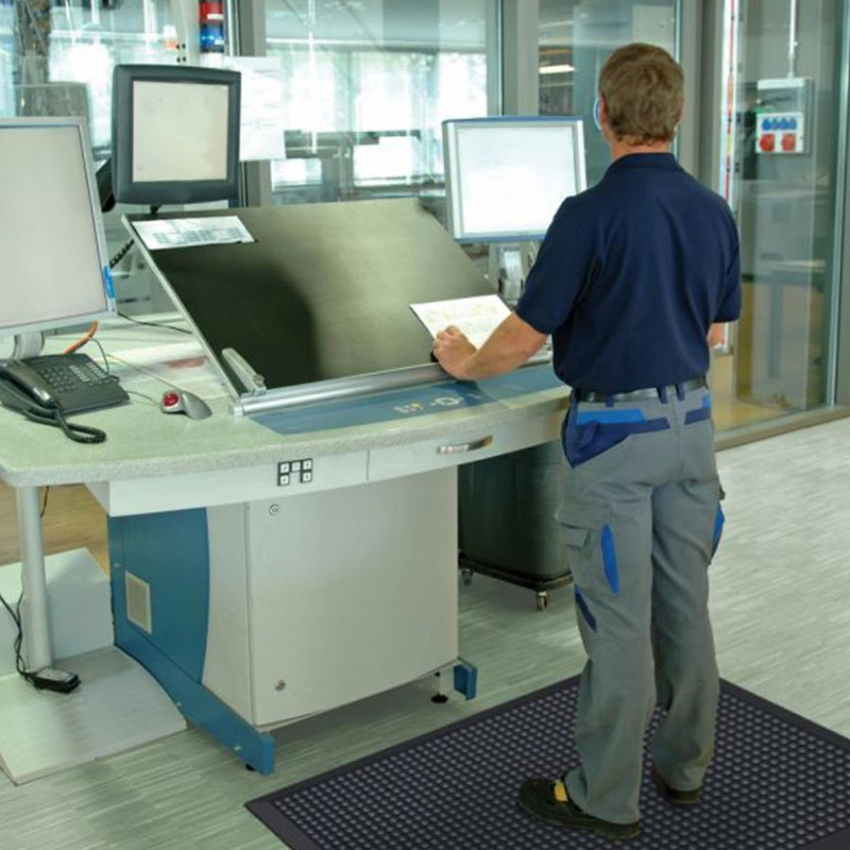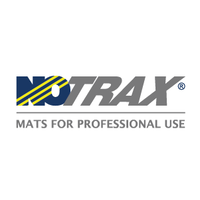










This anti-fatigue mat has been designed to grip the floor to prevent slipping, while air is trapped in its air pockets. The combination of its air pockets and rubber resistance gives a supremely comfortable feel while making the mat lightweight. This mat has a granular surface with ergonomic bubbles to relieve fatigue while guaranteeing anti-slip properties.
Available in standard and custom sizes.
Easy maintenance: clean with a broom or vacuum cleaner.
Optional grounding cable.
Completely free from harmful and toxic products such as DOP, DMF, ozone-depleting substances, silicone and heavy metals.
For installation in manufacturing plants, assembly lines, packaging, logistics warehouses and individual workstations

| 457 SKY STEP ESD |
Data sheet
| Format | Mat |
| Properties | Anti-fatigue ESD / AS Non-slip |
| Composition | Natural rubber |
| Thickness | 13 mm |
| Weight | 10kg/m2 |
| Resistant to chemicals | No |
| Environment | Dry environments |
| Intensity of use | Very intense |
| Wear index | 3/3 (Excellent) |
| Anti-slip classification | R9 |
Industrial mats meet the needs of ergonomic workstations and employee well-being.
They prevent:
There are many uses for industrial mats:
Safety criteria: The mat must cover the entire workstation, be firmly attached to the floor, not shift or slide, and have bevelled edges to prevent falls.
Thickness and flexibility criteria: Contrary to what you might think, you shouldn't choose a very thick or very soft mat. The mat should have a certain elasticity, but still allow a comfortable standing position, without the user feeling slumped.
Environmental criteria :
Environmental hazard criteria : To establish more precise characteristics for a mat (antistatic properties or fire resistance etc...) we need to take into account the hazards present in the environment where the mat will be installed.
Where hazardous liquids are present in the working environment, the anti-slip properties and chemical resistance of industrial mats should be taken into account. The presence of openings on mats to allow the evacuation of fluids is essential.
Traffic criteria: We need to take into account the traffic that takes place on the equipment: how many workers can walk on it? How often, etc., in order to choose the most suitable mat.
Prevent the many problems associated with poor workstation ergonomics: RSI, static shock, bacterial proliferation, etc.
We offer a wide choice of industrial mats: on rolls, in standard sizes, made-to-measure or modular mats to suit all types of workstations.